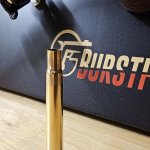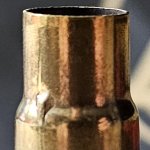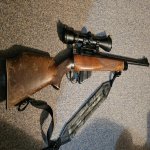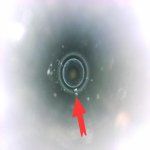Hello everyone,
I'm fairly new to reloading. I had a friend that used to reload some ammo for me, but have recently decided to do it myself.
That being said I figured rather than reload just for that one caliber, I would reload for most of the ones I own.
One caliber is .303 British, I have a lot of once fired brass I saved up over the years. It's from Winchester SuperX 180gr soft points. My rifle is a Lee Enfield mk.4 thats been sportsterized.
In cleaning, inspecting and annealing the brass I've noticed that they all have a mark/crimp on the shoulder, this does not appear on the cartridge prior to firing so it obviously occurs when the cartridge is fired in the chamber.
My question is can I still reuse this brass and reload out of it?
Any ideas on the cause? Is it something that can be eliminated during the reloading process? All of this brass is once fired from the previously mentioned factory cartridges.
Thank-you in advance for your time.


I'm fairly new to reloading. I had a friend that used to reload some ammo for me, but have recently decided to do it myself.
That being said I figured rather than reload just for that one caliber, I would reload for most of the ones I own.
One caliber is .303 British, I have a lot of once fired brass I saved up over the years. It's from Winchester SuperX 180gr soft points. My rifle is a Lee Enfield mk.4 thats been sportsterized.
In cleaning, inspecting and annealing the brass I've noticed that they all have a mark/crimp on the shoulder, this does not appear on the cartridge prior to firing so it obviously occurs when the cartridge is fired in the chamber.
My question is can I still reuse this brass and reload out of it?
Any ideas on the cause? Is it something that can be eliminated during the reloading process? All of this brass is once fired from the previously mentioned factory cartridges.
Thank-you in advance for your time.


Attachments
Last edited:












































































